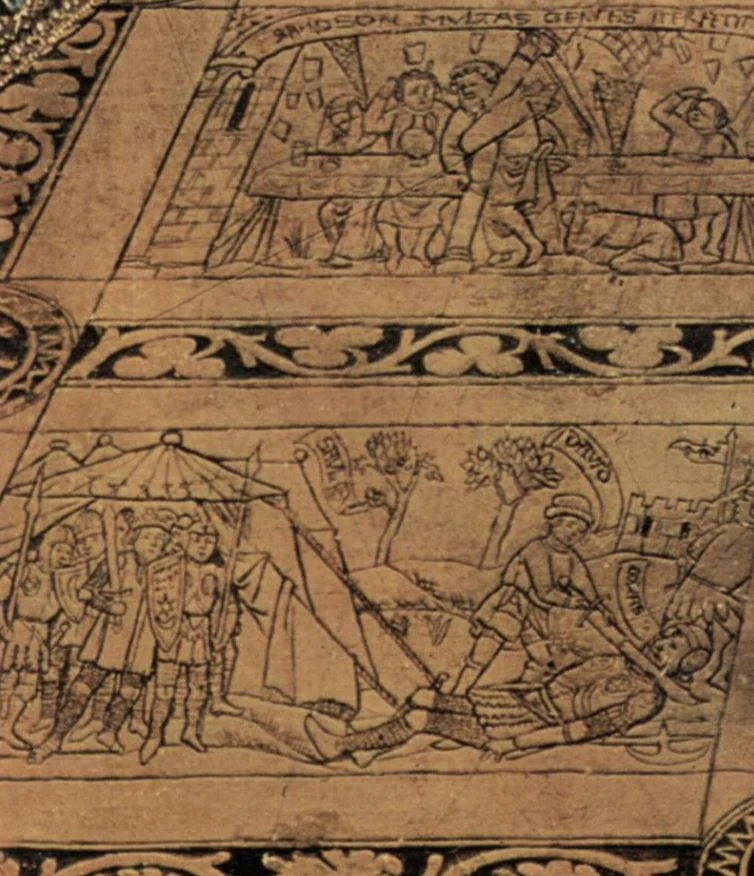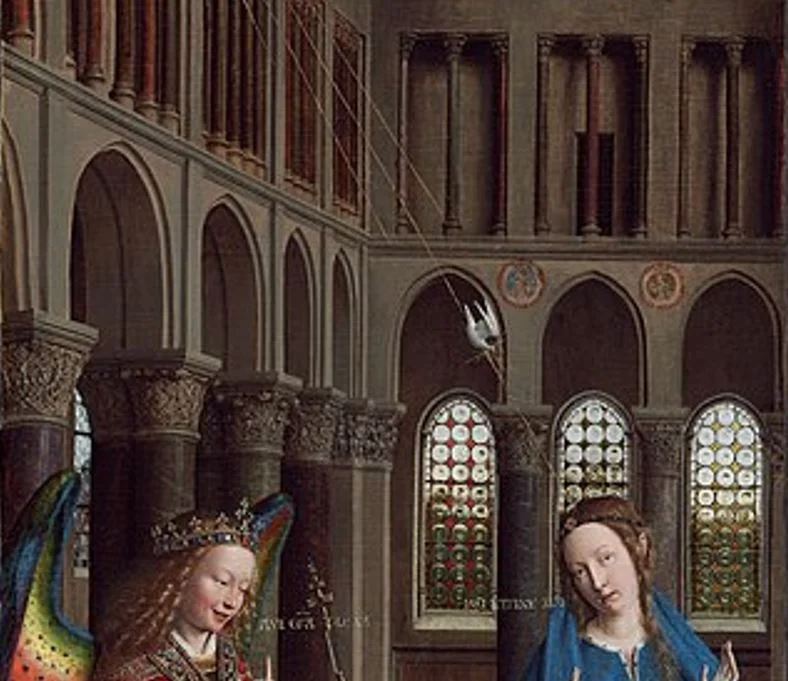One of the great paintings by Flemish Primitive and Early-Renaissance painter Jan van Eyck (1390-1441) is believed to have been part of a much larger work.
Regardless of this notion, it remains an intriguing work of art that has a lot of stories to tell.
Let’s take a closer look at some of the most interesting facts about the Annunciation by Jan van Eyck, one of the artist’s masterpieces.
1. It was painted in the 1430s, probably together with 2 other panels
The Annunciation is a very complex painting and a masterpiece of the Renaissance in the northern part of Europe.
It’s unclear who commissioned the work but we know it was completed between 1434 and 1436, just 5 years before the artist passed away.
Because Mary, the main figure in the painting, both wears royal blue and shares features with Isabella of Portugal (1397-1471), it might have been commissioned by the wife of Philip the Good (1397-1467), Duke of Burgundy at the time.
This link can be made because Jan van Eyck was the court painter of the Duke and his wife in Bruges, and was ever since 1425.

2. It depicts a common theme in Christian art
Mary is depicted on the left as she is visited by the Archangel Gabriel who announces she will bear the child of God. This is mentioned in Luke 1:26-38 and was a popular theme in Christian art during the Renaissance.
Van Eyck literally added 15th-century text bubbles to mention what the two are saying:
- Archangel Gabriel: “AVE GRÃ. PLENA” which means “Hail, full of grace…”
- Virgin Mary: “ECCE ANCILLA DÑI” which means “Behold the handmaiden of the Lord.”

What’s remarkable about these words is that they are depicted upside down as they are directed towards God.

3. The setting of the painting is located in modern-day Israel
Even though the setting appears to be the interior of a church initially, it becomes clear upon closer inspection that this isn’t the case.
It was a popular belief back in the Middle Ages that Mary had a job in the Temple of Jerusalem to spin curtains and she used this time to study.
This is where the scene takes place and Mary can be seen studying. This is in line with the notion that Mary was studying the Book of Isaiah the moment that Archangel Gabriel arrived.
4. The tiles on the floor depict scenes from the Old Testament
Just like with his other works, Jan van Eyck included numerous details related to the core subject of the painting.
One of the most prominent examples is the tiles on the floor which are all related to the life of Jesus Christ. We can see:
- David slaying Goliath – The victory of Christ over the devil.
- Samson pulling down the temple of the Philistines – A prelude to the crucifixion and the Last Judgement.
- Delilah cutting Samson’s hair – A reference to the coming betrayal of Christ.

5. It’s on public display in a famous museum in Washington DC
Even though we can make assumptions about the provenance of the painting, nothing remains clear until 1817. This was the year that it was bought at an auction in Paris.
It’s assumed that it had ended up in a monastery near the French city of Dijon in 1791 known as Chartreuse de Champmol. If this was the case, it was probably brought to Paris during the French Revolution because the monastery was destroyed during this event in the 1790s.
After changing hands multiple times in the 19th century, it eventually ended up in the collection of Andrew Mellon in 1931 after which it was donated to the National Gallery of Art in Washington D.C. in 1937.
Until today, this remarkable work of art remains on public display in one of the most popular museums in the United States.

More interesting facts about the Annunciation by van Eyck
6. The painting has dimensions of 93 x 37 centimeters (3.05 x 1.21 feet), which most probably means that it was part of a triptych.
This was also described by the source who claimed to have seen the painting in Dijon in 1791: “paintings on wood of the type of the earliest Flemish painters, which come from the chapels of the Dukes.”
This also means that it’s very likely that the other 2 panels, which probably decorated an altar all in one of the Duke of Burgundy’s chapels, were lost during the French Revolution.
7. The painting depicts the moment that the word becomes flesh. Along with the mention that she will bear the child of God, the Virgin Mary also receives the Seven gifts of the Holy Spirit.
This is depicted as seven rays of light coming from the window in the top left corner. These rays of light are joined with a white dove which represents the Holy Spirit.

8. The level of the symbolism in the painting is quite remarkable, as is the case with just about any other van Eyck painting. He was an educated man who loved to include details that only a few people at the time could grasp.
Apart from the imagery on the tiles, we can also see images depicting various scenes on the wall in the background. These include the “Finding of Moses” by the Pharaoh’s daughter, a prelude to the Annunciation itself, and Moses receiving the Ten Commandments.

9. Even though it’s pretty certain that this painting was part of a triptych, it’s unclear what the other paintings might have depicted as there is not a single clear reference to them.
The middle painting was most probably at least double the size of this one and potentially depicted either the “Nativity” or the “Adoration of the Magi.” The right panel probably depicted either the “Visitation of Mary” or the “Presentation of Jesus.”
10. What’s fascinating about most of van Eyck’s works is that he continuously added more details to his paintings as work on it progressed. In the case of this painting, the underdrawing didn’t include the imagery on the tiles and back wall, which means he added it later on.
Close examination of the painting in 1998 also revealed that the vase with lilies in the bottom right corner, which represents the purity of the Virgin Mary, was completely absent in the initial version of the painting.
He didn’t even reserve space for it, which means that this was most probably the final detail added by the artist to this incredible masterpiece.

